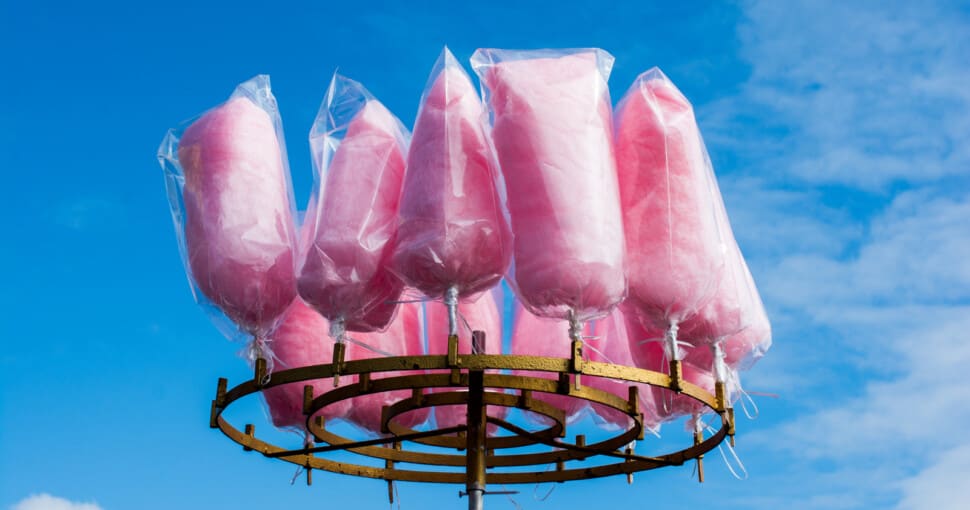Cotton candy has long been a staple of many a festive occasion. The rich colors and fun shapes have enticed carnival goers to leave all their worries at the gates and enjoy themselves without the weight of the world impeding their excursion.
Contents
Anyone who’s ever tried a piece of cotton candy knows how it makes them feel. Cotton candy makes us think back to our childhood and reminds us that it is okay to sometimes just let go and be a kid again. Let’s look at some plants that look like cotton candy to bring color to our gardens. These plants include:
- Katsura Tree – colorful leaves and flowers, when in full bloom, look almost cloud-like and resembles cotton candy.
- Prairie Smoke – their beautiful pink flowers wisp in the air, resembling the sugar strands of cotton candy.
- Purple Betony – their small purple flowers look fluffy and resemble the texture of cotton candy.
- Pinks ‘Candy Floss’ – thin white petals resemble cotton candy and accurately describe this plant.
- Aaron’s Beard – small sprouting tendrils resemble sugar crystals in cotton candy.
- Eastern Redbud – small clumps of pink and white flowers give this tree a cotton candy appearance.
- Cotton Grass – the soft fluffy texture of this plant’s tassels resembles cotton candy.
- Cotton – cotton candy is named after this plant as the candy looks like cotton.
Planting some fluffy, colorful plants around our garden will turn it into a carnival wonderland. These plants will be a wonderful addition to any garden. Let’s look at these 8 plants resembling cotton candy more closely.
1. Katsura Tree (Cercidiphyllum Japonicum)
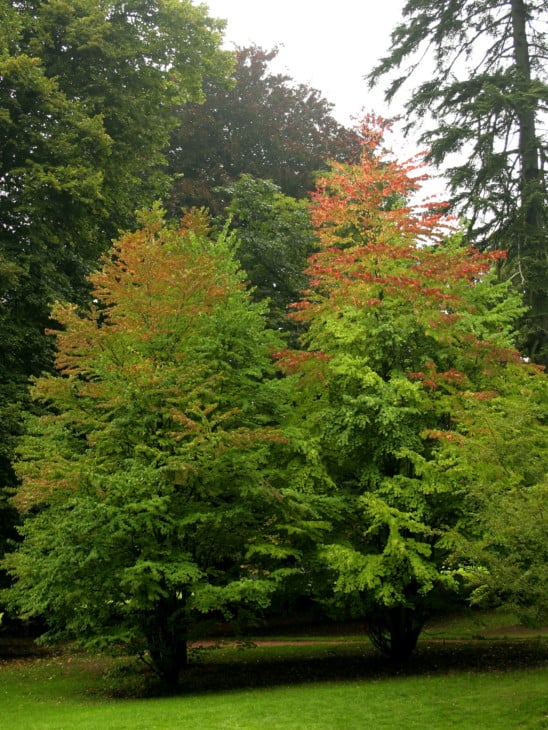
The Katsura tree (Cercidiphyllum Japonicum) is native to Japan and provides nearby pedestrians a lovely respite from the harsh sun beating on their brows. In the Spring, elegant leaves start with a reddish-purple hue until the leaves mature and turn blue-green. Their leaves turn a brilliant yellow color when the season changes to autumn.
The Katsura tree can grow to nearly 60 feet and prefers moist, well-draining soil. Aspiring botanists will enjoy cultivating their Katura tree, as these trees are very hardy and don’t require much maintenance once their roots are established.
Related: 31 Most Common Trees in Japan
2. Prairie Smoke (Geum Triflorum)
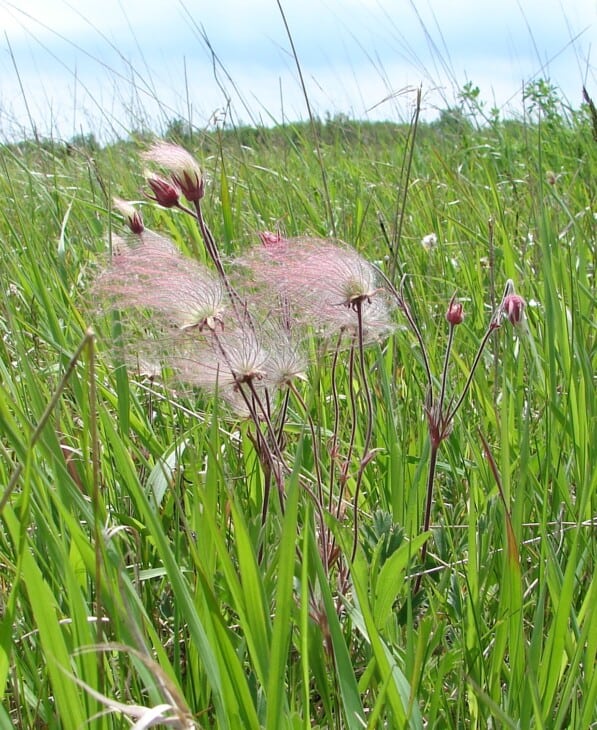
Prairie Smoke (Geum Triflorum) is native to North America. This beautiful plant resembles cotton candy because of its whispy seeds. Other names for this plant include Long-Plimed Avens and Old Man’s Whiskers.
Prairie Smoke flourishes in sub-arctic grasslands and prefers silty and loamy soils. Like other perennial plants, these plants grow in late summer into Fall. Large clusters of bright pink buds bloom in early summer on 12-18 inch stems.
Prairie Smoke is a great addition to any garden that needs a pop of color. Their long wispy seedlings will make guests feel like they can reach out and eat these plants. The seedheads will turn golden yellow before being whisked away by a silent breeze.
3. Purple Betony (Betonica Officinalis)
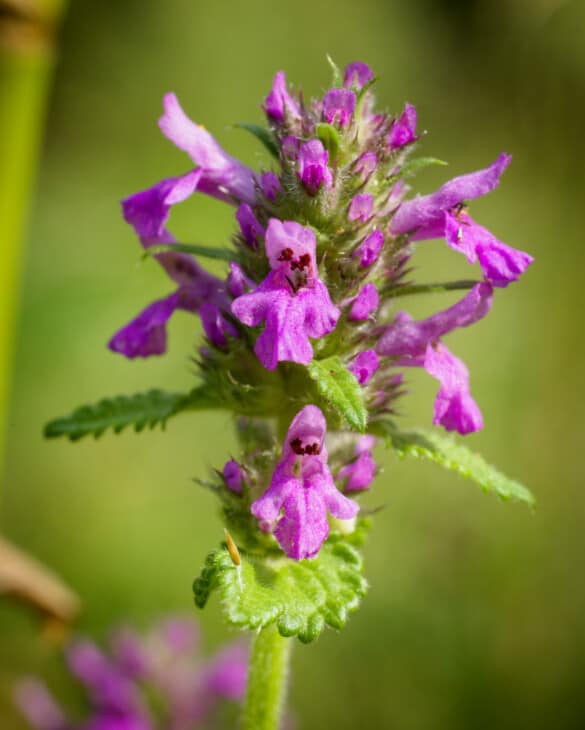
The brilliant purple flowers found on Purple Betony (Betonica Officinalis) resemble cotton candy’s bright colors and fluffy texture. These plants flourish in meadows, parks, hedge banks, and open forest woodlands. They tend to grow in clumps at about 1 to 2 feet tall.
When planted in full to partial sun in well-drained soil that is neutral to acidic, they become extremely drought resistant. When mature, they emit a strong aroma that attracts pollinators and entices wandering eyes through their long elegant stems.
Using Purple Betony as a border around your garden will help you watch for intrusive aphids and other insects and serve as an early warning system for the rest of your garden. Everyone should have at least a few Purple Betonies around their yard to bring a sense of wonder and excitement to their home.
4. Pinks ‘Candy Floss’ (Dianthus)
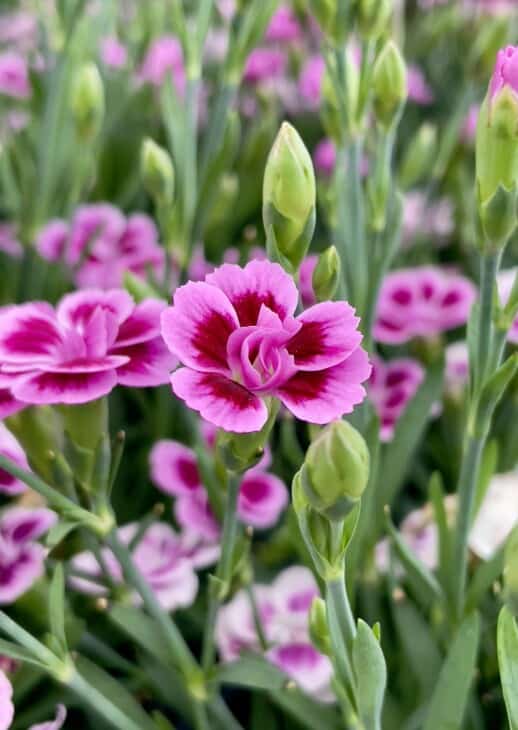
Pinks ‘Candy Floss’ (Dianthus) looks like cotton candy when viewed from a distance. Their soft pink flowers fan out to create a sense of layered confection, perfectly accented by their soft green foliage. Pinks can grow up to 11 inches tall and 11 inches wide.
These hardy plants can be placed in partial shade and in full sun as long as the soil they are planted in is heavy and well-drained. Their first flowers will sprout between May and August each year, provided you tend to your plants regularly.
Pinks make for excellent bedding plants and will perfectly border any garden they are planted in, and their clove-like scent also makes them perfect for any room in your home.
5. Aaron’s Beard (Hypericum Calycinum)
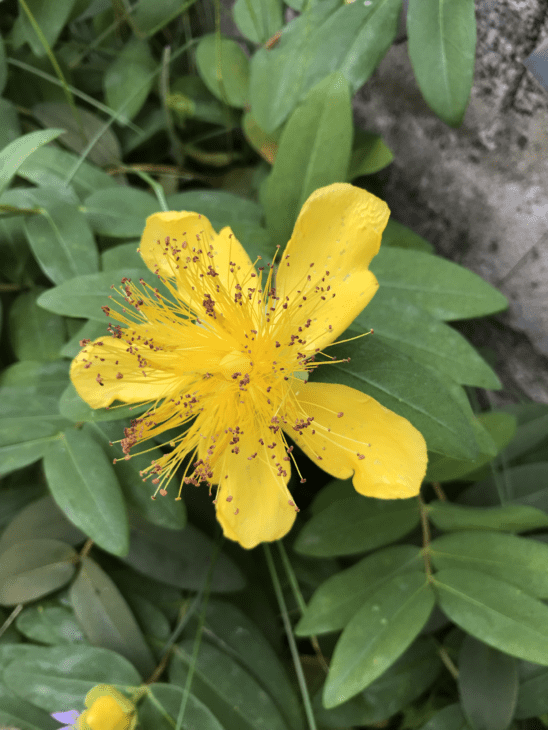
Aaron’s Beard (Hypericum Calycinum), also known as St. John’s Wort and Rose of Sharon, looks most like cotton candy when its flowers fully bloom around mid to late Fall. Their vibrant yellow rose-like flowers grow in clusters of two to three flowers and cover the entirety of the plant’s foliage.
This shrub is perfect for any gardener looking to cover a large amount of soil in a low-maintenance plant that can withstand full sun and doesn’t require a lot of water. As long as you ensure you planted your Arron’s Beard in well-drained soil, you shouldn’t have much trouble keeping this magnificent plant around all year.
Our suggestion for the best placement for Aaron’s Beard is in rock gardens, banks, and slopes that struggle to hold larger, heavier plants. To promote new growth, consider clipping or mowing your plant each Winter or latest early Spring.
6. Eastern Redbud (Cercis Canadensis)
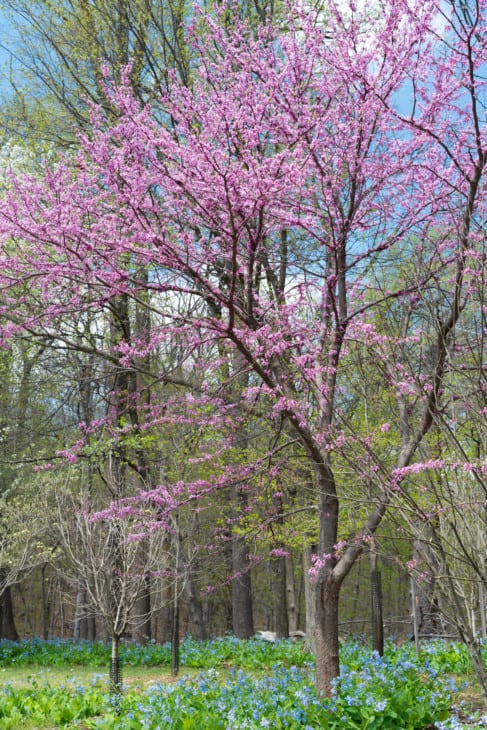
The Eastern Redbud (Cercis Canadensis) is also called Eastern Redbud Cotton Candy due to the shape and color of its short stubby flower buds. When planted in full sun in well-drained soil, these trees can grow almost 25 feet tall.
Their cheerful heart-shaped leaves perfectly accent their beautiful purple and white blossoms that look almost candy-like. Their flowers are typically displayed for two to three weeks during Spring and early Fall.
If you have a hedge or two that needs a companion that looks like cotton candy, look no further than the Eastern Redbud. They require little to no pruning and spruce up whichever garden they are planted in. All it needs is a little love and attention during its infant years.
Related: 5 Pros And 4 Cons Of Redbud Trees
7. Cotton Grass (Eriophorum Angustifolium)
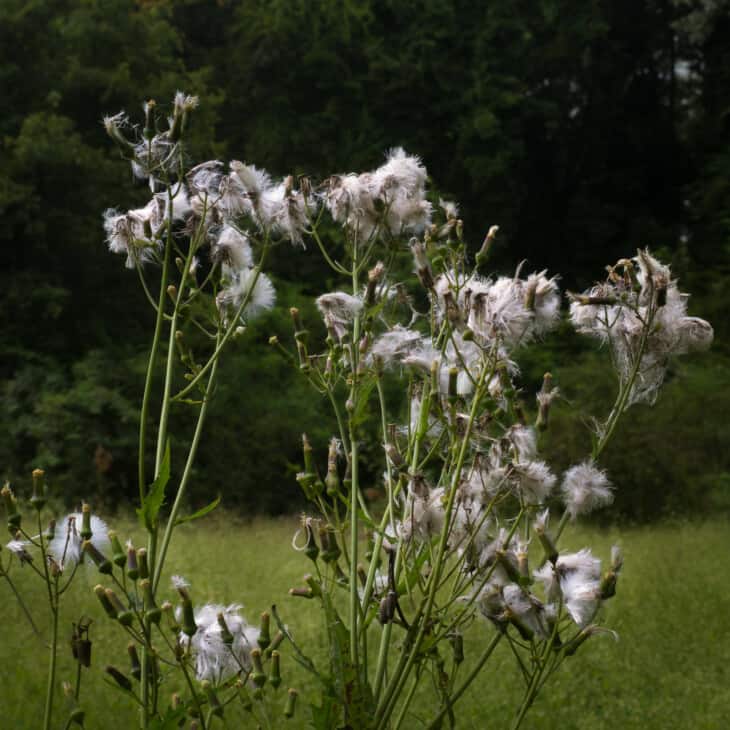
Cotton Grass (Eriophorum Angustifolium) resembles tiny white cotton clouds perfectly perched on small, slender green stems. When viewed from a distance, you can barely see its long, thin stalks.
These plants are native to wet areas such as marshlands but can do well at home when planted in very shallow water. If you don’t have a pond handy, try planting them in wet, acidic soil like peat, sand, or clay.
Alternatively, you can attempt to plant Cotton Grass in pots as long as your pots have at least two to three inches of standing water. When fully mature, Cotton Grass stands around 12 inches tall and adds mystery to any garden or home.
8. Cotton (Gossypium Hirsutum)
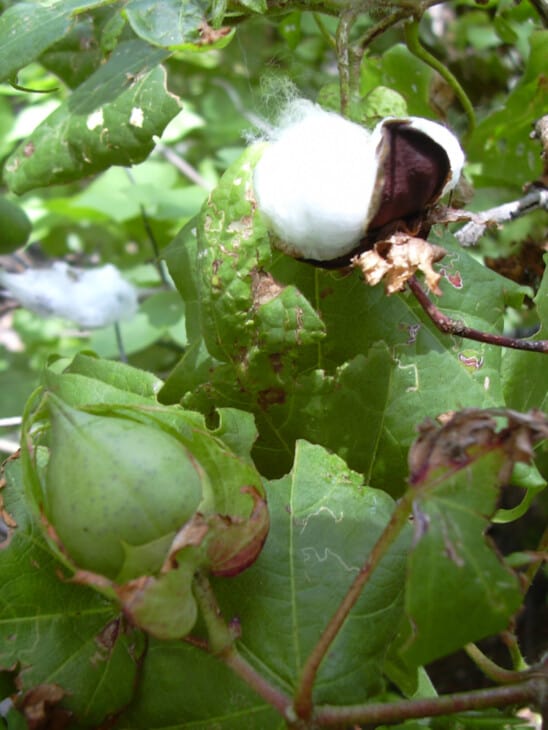
Cotton (Gossypium Hirsutum) is where cotton candy gets its name from. These white balls of perpetual fluff have been used to make clothes and other fabrics worldwide. Their white fibers can easily accept many dyes to turn them into a bouquet of nearly any color imaginable.
Cotton starts as perennial tree-like plants and can grow up to 20 feet tall when left to itself in tropical climates. Cotton develops small white blossoms around 80 days after it has been planted and will change to a reddish color before giving way to small green pods that mature into the cotton hairs we know and love.
Not many people have the know-how or the patience to grow cotton at home, and it should best be left to the dedicated farmers who understand the intricacies of cotton cultivation.

